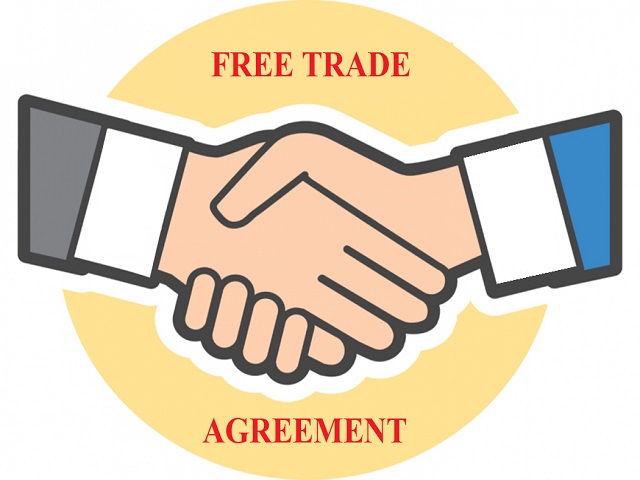Top Free Trade Agreements Helping Bangladeshi Exporters Compete
As Bangladesh eyes LDC graduation by 2026 and seeks to expand its global export footprint, Free Trade Agreements (FTAs) and preferential trade frameworks have become crucial to maintaining a competitive edge. These agreements allow Bangladeshi goods—particularly from its ready-made garment (RMG), agriculture, and light manufacturing sectors—to access international markets at reduced or zero tariffs, positioning the country as an increasingly important trade player.
In this blog, we explore the top FTAs and preferential trade schemes that are helping Bangladeshi exporters stay competitive in a challenging global environment.
Why Trade Agreements Matter for Bangladeshi Exporters
Trade agreements simplify market access, reduce trade barriers, and eliminate or lower tariffs on exported goods. For Bangladesh’s export-driven economy, especially with over 80% of exports coming from the RMG sector, FTAs help:
-
Improve cost competitiveness abroad
-
Encourage diversification of export products
-
Open up new markets beyond traditional destinations like the U.S. and EU
-
Promote investment and innovation in export sectors
🔗 Looking to expand your export operations? Connect with local trade agents in Bangladesh to navigate logistics, customs, and compliance.
1. EU Generalised Scheme of Preferences (GSP)
The European Union (EU) is Bangladesh’s largest export destination, accounting for over 50% of RMG exports. Under the GSP Everything But Arms (EBA) scheme, Bangladesh enjoys duty-free and quota-free access for all exports except arms and ammunition.
Key Benefits:
-
Zero tariffs on textiles and garments
-
Preferential access for seafood, jute, and agricultural products
-
No cap on volume exports
This has allowed Bangladeshi exporters to price competitively and dominate the EU fast fashion market.
🔗 Read more: How logistics is changing Bangladesh’s export strategy
2. South Asian Free Trade Area (SAFTA)
SAFTA, signed by the SAARC countries, provides a regional trade platform with reduced tariffs among South Asian nations including India, Pakistan, Sri Lanka, Nepal, Bhutan, Maldives, and Afghanistan.
How It Helps:
-
Reduced tariffs on select goods
-
Easier movement of goods within the region
-
Shared trade infrastructure initiatives
Although intra-SAARC trade is relatively low, SAFTA still offers growth potential in textiles, pharmaceuticals, and processed food exports.
🔗 Learn how to optimize routes for regional exports: Port vs. Inland Transport for Bangladeshi Exports
3. Asia-Pacific Trade Agreement (APTA)
Formerly the Bangkok Agreement, APTA includes China, South Korea, India, Sri Lanka, Laos, and Bangladesh, offering preferential tariff access for thousands of products.
Export Advantages:
-
Access to large Asian markets like China and Korea
-
Gradual tariff reductions for RMG, jute, ceramics, and leather
-
Export opportunities beyond the traditional Western markets
Bangladesh is negotiating for deeper concessions and more products under APTA, aligning its strategy with Asia’s growing consumer markets.
4. Duty-Free Quota-Free (DFQF) Access to Canada, Australia & Japan
Countries like Canada, Australia, and Japan provide Bangladesh with DFQF access under their own GSP-like frameworks.
-
Canada: Duty-free access under Least Developed Country Tariff (LDCT)
-
Australia: No tariffs on nearly 99% of goods
-
Japan: Long-standing GSP benefits for Bangladeshi textiles and jute
These programs offer market diversity and reduce dependency on the EU and U.S. markets.
🔗 Want to penetrate new markets? Bangladesh-Agent.com can help with compliance and certifications.
5. Proposed Bangladesh-Thailand & Bangladesh-Indonesia FTAs
Bangladesh is actively pursuing bilateral Free Trade Agreements with Thailand and Indonesia — two important ASEAN economies with a growing appetite for imports.
Anticipated Gains:
-
Better trade balance with ASEAN
-
Enhanced market for Bangladeshi pharmaceuticals, jute, frozen foods
-
Strategic positioning in Southeast Asia’s supply chain
As Bangladesh builds logistics infrastructure and expands export capacity beyond RMG, these agreements are expected to boost product diversification.
Looking Ahead: Post-LDC Graduation Strategy
By 2026, Bangladesh will graduate from Least Developed Country (LDC) status. This will lead to the loss of many unilateral trade preferences like the EU’s EBA and GSP schemes.
Government Strategy:
-
Signing more bilateral FTAs
-
Pushing for comprehensive trade deals with ASEAN, UK, and Eurasian regions
-
Enhancing local industry capacity and product quality compliance
🔗 For manufacturers preparing for LDC graduation, check our guide: Bangladesh’s Export Power: From RMG to High-Value Products
Conclusion
Free Trade Agreements and preferential market access are pillars of Bangladesh’s export economy. From the EU’s GSP to regional partnerships like SAFTA and APTA, these agreements ensure Bangladeshi products remain competitive in global markets. However, as the country approaches LDC graduation, diversifying trade partnerships and upgrading compliance will be essential.
For businesses seeking to maximize export growth through trade deals, the support of expert sourcing and trade agents becomes invaluable.
📌 Need help navigating tariffs, documentation, or customs for exports? Visit Bangladesh-Agent.com to get started with trusted local agents and export consultants.
